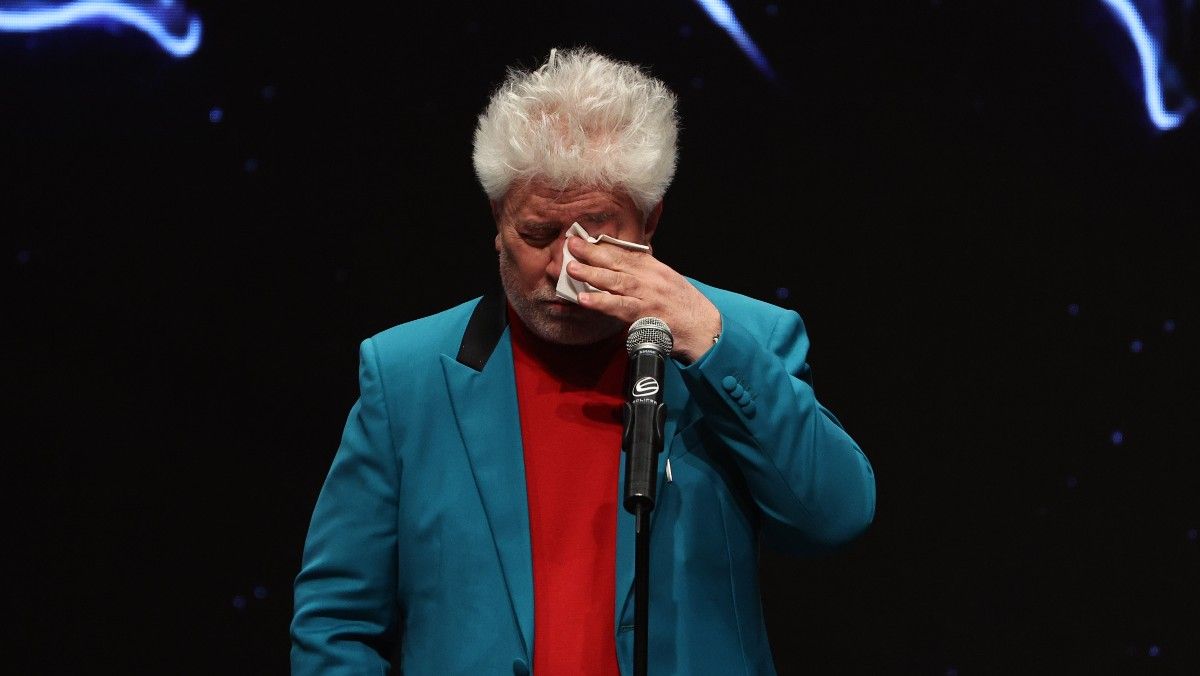The most natural thing is smile when we are happy and cry when we are sad. But sometimes when we feel extremely happy, we end up crying with joy. Something similar happens when we are nervous. The natural thing on these occasions would be to maintain a serious demeanor but, when the nerves get worse, there are who reacts with a nervous laugh or even with a laugh. But why does this happen? Why do we have seemingly contrary reactions to our feelings? whatAre our brains short-circuiting for emotions? Pay attention because the answer, in addition to being fascinating, invites us to understand more about how our gray matter works.
Nervous laughter and tears of joy are known as dimorphic emotions. It is a type of reaction that we have when we experience an emotion so strong that it overwhelms us. In these cases, according to the psychologist julia shaw in the book ‘Doing evil’, our brain launches a contrary emotion to «counteract emotional overload» and prevent the feeling from overwhelming us even more. «Humans do not always respond to situations with a single emotion, but sometimes, if the feeling is very strong, we experience simultaneous and even contradictory emotions«, highlights the researcher.
«Our brain launches a contrary emotion to counteract the emotional overload»
We can all experience dimorphic emotions although, according to experts, there are specially predisposed people a expresses this type of apparently contradictory reactions. There are also situations in which these reactions are more common. The clearest example, and perhaps the most repeated, are the happiness tears. How many times have we seen a ‘celebrity’ cry when receiving an award? Or parents crying with joy after the birth of their son or daughter?
low same goes for nervous laughter. It is very common for us to laugh when, for example, someone catches us ‘red-handed’ telling a little lie. Or in especially tense or uncomfortable situations in which we don’t know how to react. There are many people who, for example, suffer of fits of nervous laughter during funerals or he laughs when they tell him bad news. Dimorphic emotions tend to surface more easily at times when emotions are on the surface.
Why do you want to squeeze something adorable?
Another very curious phenomenon, also related to dimorphic emotions, is the process known as «tender aggression». This is the feeling that comes when we see something very cute or adorable and we want to squeeze it really hard. Like when we see a baby and want cheeks pinch Take a bite on the arm. Or when we see a puppy and want to hug it very tightly or squeeze its face. This curious feeling of «wanting to hurt things that seem cute to us» responds to the same logic. It’s our brain’s fault for wanting counter an overdose of cuteness.
Related news
to understand how does the tender aggression mechanism work, a team of researchers from Yale University devised a curious experiment. They gathered a group of participants and put first a piece of bubble wrap and then a stuffed animal in their hands. Next, images of particularly cute animals and they studied his reaction. In both cases, it was shown that the more adorable the animal, the more the volunteers reacted by squeezing either the bubble wrap or the stuffed animal.
«It is a reaction of our brain so as not to explode with tenderness»
As explained by the researcher Oriana Aragón, one of the leading experts in the study of this phenomenon, one of the main characteristics of tender aggression is that, in reality, It’s not about real attacks.. they are just curious reaction of our brain «so as not to explode with tenderness».

